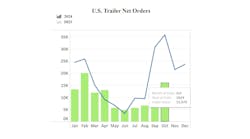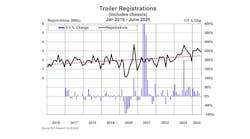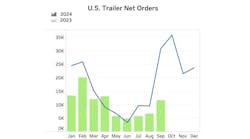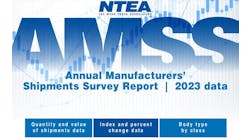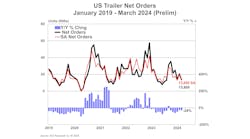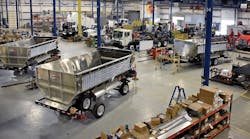Economic activity in the manufacturing sector expanded in October, and the overall economy grew for the 114th consecutive month, the nation’s supply executives said in the latest Manufacturing ISM Report On Business.
“Comments from the panel reflect continued expanding business strength,” said Timothy R. Fiore, chair of the ISM Business Survey. “Demand remains moderately strong, with the New Orders Index easing to below 60% for the first time since April 2017, the Customers' Inventories Index remaining low but improving, and the Backlog of Orders Index remaining steady.
“Consumption softened, with production and employment continuing to expand, but at lower levels compared to September. Inputs—expressed as supplier deliveries (increased), inventories and imports—retained September’s levels.”
The October PMI registered 57.7%, a decrease of 2.1 percentage points from the September reading of 59.8%.
Other highlights from the report:
- The New Orders Index registered 57.4%, compared to the September reading of 61.8%.
- The Production Index registered 59.9%, compared to the September reading of 63.9%.
- The Employment Index registered 56.8%, compared to the September reading of 58.8%.
- The Supplier Deliveries Index registered 63.8%, compared to the September reading of 61.1%.
- The Inventories Index registered 50.7%, compared to the September reading of 53.3%.
- The Prices Index registered 71.6%, compared to the September reading of 66.9%, indicating higher raw materials prices for the 32nd consecutive month.
While the economy continues to expand, challenges remain, the report indicates, including supplier labor issues and transportation difficulties.
“Continued supply chain delivery difficulties led to an increased consumption of inventory, and import expansion was stable,” Fiore said. “Lead-time extensions continue, while steel and aluminum prices are stabilizing.”
The machinery and transportation equipment industries were among 13 industries reporting growth in October. Fabricated Metal Products reported a contraction.
“Overall, the manufacturing community continues to expand, but at the lowest level since April 2018,” Fiore said.
Here are some selected comments from respondents:
-- “All electronic components are having shortages and much longer lead times that impact our production.” (Computer & Electronic Products)
-- “Tariffs are causing inflation: increased costs of imports, increased cost of freight and increased domestic costs from suppliers who import.” (Chemical Products)
-- “Protein prices continue under pressure from heavy US supplies and export concerns related to trade tariffs. Higher costs related to trade tariffs are starting to be passed on to the cost of goods sold.” (Food, Beverage & Tobacco Products)
-- “While order intake remains steady, the pace has slowed since the first half the year. Instead of growing, the backlog is declining. We were processing orders at a high level; now they are at the point of status quo from late 2017. We are not concerned yet, but there is certainly trepidation about the future.” (Machinery)
-- “NAFTA 2.0/USMCA does nothing to help our company, as it does not address Section 232 tariffs.” (Plastics & Rubber Products)
-- “We continue to run at full capacity. I continue to see pricing pressures and longer lead times in most commodities.” (Primary Metals)
-- “Mounting pressure due to pending tariffs. Bracing for delays in material from China—a rush of orders trying to race tariff implementation is flooding shipping and customs.” (Miscellaneous Manufacturing)
-- “Demand is high, and the supply chains are stressed.” (Transportation Equipment)
-- “Orders and shipments are strong right now. Backlog for Q4 and next year are way down. Savvy customers are asking us to hold pricing on blanket orders, but material suppliers will only hold prices for a few days, which puts us in a bad spot. We’ll be spending as much as possible on capital improvements before the end of the year.” (Fabricated Metal Products)
-- “Steel tariffs continue to negatively affect our cost, even though we utilize US sources for steel. Oil prices put meaningful upward pressure on cost. Continued tightness with truck drivers is expected.” (Petroleum & Coal Products)

